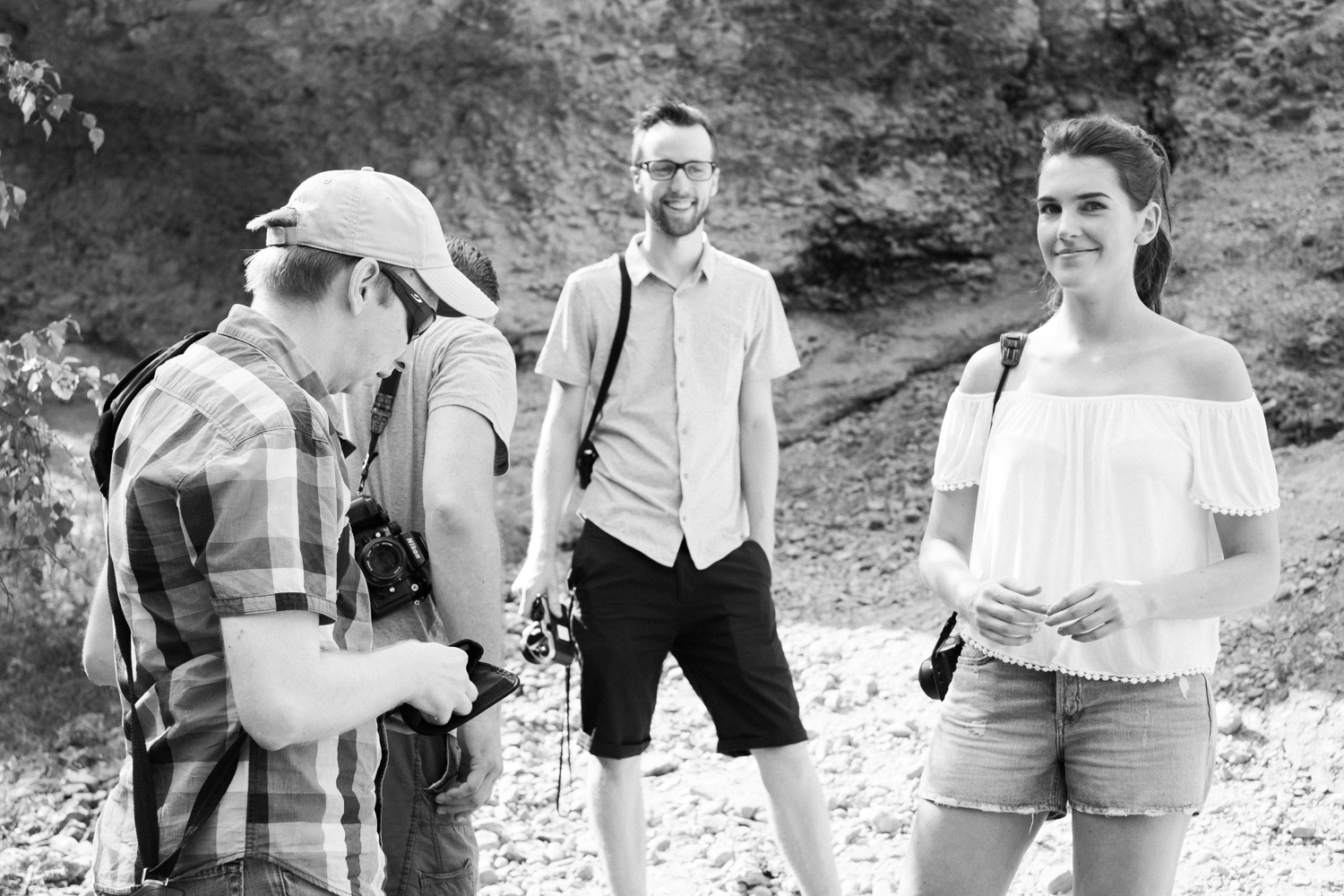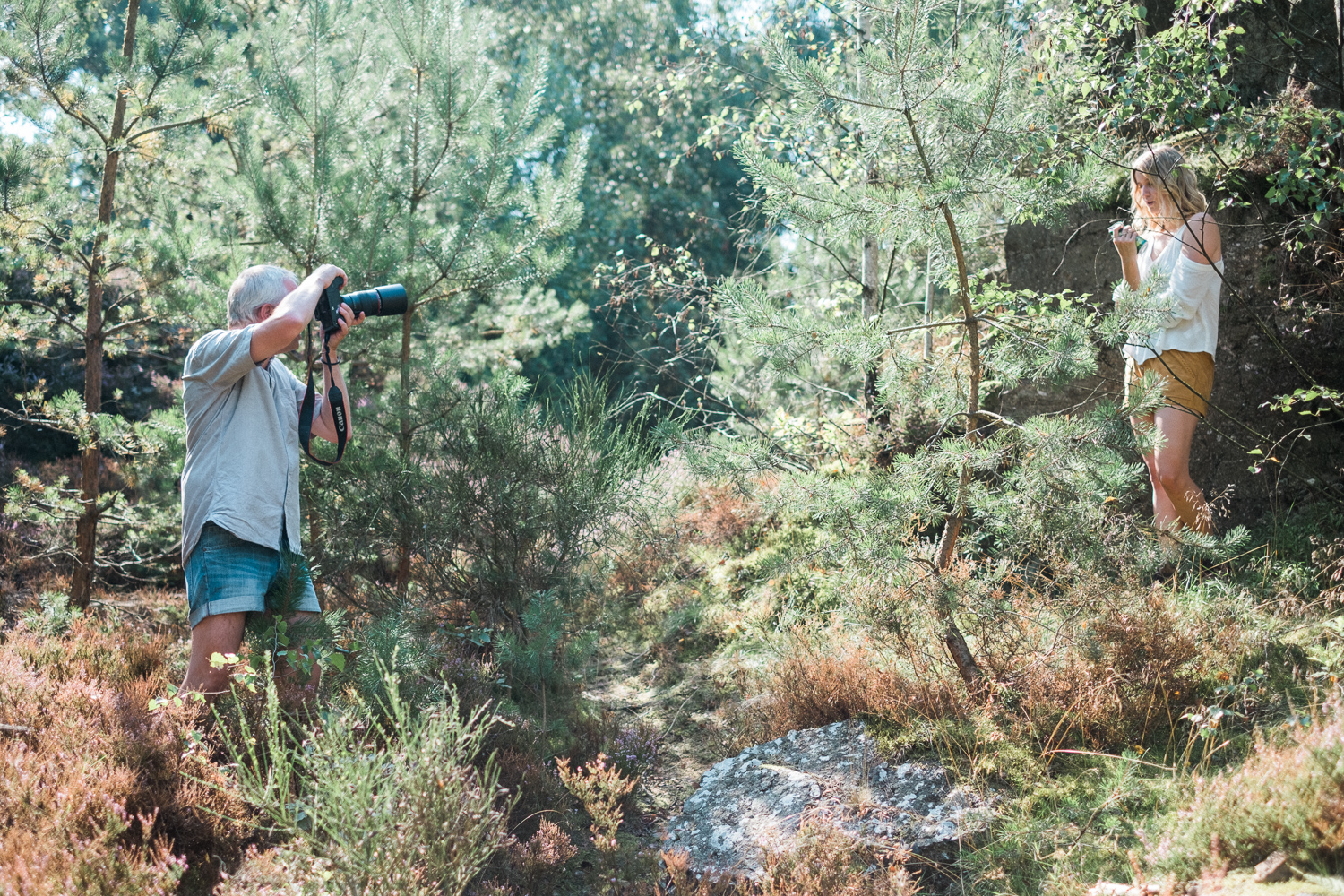Hasselblad 500cm - Kodak Portra 160
Supported and organized by MeinFilmLab Germany
Choosing a workshop is not easy. Many photographers and self acclaimed photo experts offer workshops these days and I suggest that most of these workshops are either ineffective, boring or aim at beginners. The most important aspect to look at when choosing a workshop is obviously the photographer who is conducting the workshop. This does not necesseraily mean it should be one of the big names, but it should be a person that has something valueable to tell. I don´t attend workshops often, but when I learned about the workshop conducted by Jesse Struyvelt happening during the Summer Festival of the MeinFilmLab, I was immediately hooked. No doubt I wanted to join.
Jesse is a young photographer from Belgium who focuses on analog black and white photography. Despite his young age he is into a complete analog workflow that includes darkroom printing. Something that is very rare. But this is just one aspect, that caught my attention. The far more important thing is his overwhelming portrait work. His series "Women behind emotions" is entirely printed on Baryta Paper and wonderfully handcrafted. He photographed everyday women and portrayed them in their natural surroundings , at home and in a comfortable and known place. He managed to really focus on evoking and visually painting emotions. When you look at his work, you really feel how much thought he puts in his imagery. It is open to the viewer whether his work reflects the emotions of the models, the photographer or even the viewer.
After arriving at MFL in Hürtgenwald, a small village in the Eifel region close to Cologne, I was warmly welcomed by the owner of the MeinFilmLab Jörg Bergs and his fantastic crew. The analog community of Germany comes to live in this hidden place. As the group formed and the attendees and models gathered, I knew that is was going to be great. I met Jesse and we both immediately had a lot of things to talk about. The workshop started on time and Jesse gave us an overview of his work. After a short introduction we got into medias res and Jesse started with some interesting and thoughtful tips on how to conduct a model shooting. He concentrated on what compositional tools he uses and how he prepares the shoot. Many good and interesting points were covered during this introduction. It did not take too long and after everybody loaded his camera with fresh film, we were ready to head out to the shooting location.
Jörg was able to arrange two wonderful and very experienced models, plus he sent his assistant Corinna with us, who also modeled gorgeously for us. It was a pleasure to work with all of them! The location was a renaturated former mining area with many trees and a small forest that provided some very cool shooting locations. After some organizational talk we split into two groups of four photographers and one model. Jesse switched between each group and helped out during the shooting with ideas, tips and a helping hand. His lightmeter was all around. I liked the free play character of the shooting. Everybody was able to pursuit his own ideas and concepts. The only thing I missed was Jesse doing some shooting himself so we could have watched him and how he is doing his work. He really focuses on evoking emotions by posing the model and effectively using light. Not only that he encouraged us to also shoot in hard light and not always go for the soft light in open shade, he also thought us how to do it. The crucial part is to develop and eye for the shadows on the models face. He showed us how the read the light and how a small change in pose and position dramatically changes the look and feel of the portrait.
We had a lot of fun, but the sun was burning so hot that everybody was happy when he called it quit and were heading home back to the airconditioned lab. After some drinks Franzi and Corinna took care of our films and started developing them in a AGFA film processor. It was very interesting to have a peak into the lab´s workflow and look over the shoulders of the crew while they were developing our films. I was amazed on how fast this process is! Despite the wonderful machine there are also many steps involved that all need to be done carefully by hand. To me it seemed like a very efficient and well organized workflow. After a certain time we were able to scan the first frames.
One of the best parts of the workshop, besides the great tutoring by Jesse, was the ability to attend the scanning process. Jörg and his team explained all the required steps and discussed with us the final look of our scans. In this stage of the analog process, where digital comes into play, it is interesting to see how a good lab scanner performs. The Fuji Frontier works like a color head in the darkroom which uses a small camera to capture the projected image instead of photographic paper. The scanner operator has options to adjust contrast to a certain extend and can influence color filtration. Filtration is probably the most important step during scanning. A good scanner operator will bring film to live and it was fascinating to watch this process. There is no magic involved, except for the good quality of the equipment. It just simply depends on the good eye of the operator. During this process the lab can to a certain extend fulfill customer requests
Finally we have been discussing each others work and Jesse helped us choosing the best shots from our rolls. Jörg printed our best images and we were all able to take some nice shots home.
Portrait film photography is something unique. I found it easier to connect with the subject even though it takes little longer to setup the camera and to manually focus. After the processing of the films we are already very close to the final image without the temptation of over-retouching. The only creative or interpretative step that is required in the process is thecolor balancing during scanning.
Besides the wonderful tutoring by Jesse, the biggest advantage of having an integrated workshop, where you not only shoot but also develop and scan your films, is the possibility to be a part of this creative process.
Thank you Jesse for being such a good teacher and thank you Jörg for helping us to find our own visual voice! It was a big pleasure being part of the group.
















